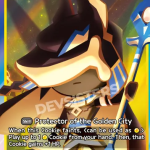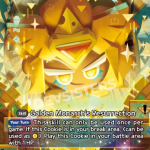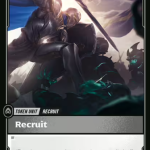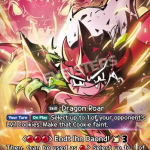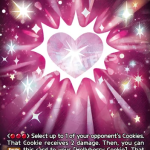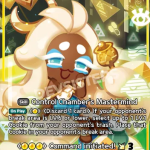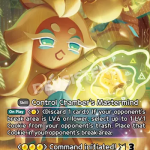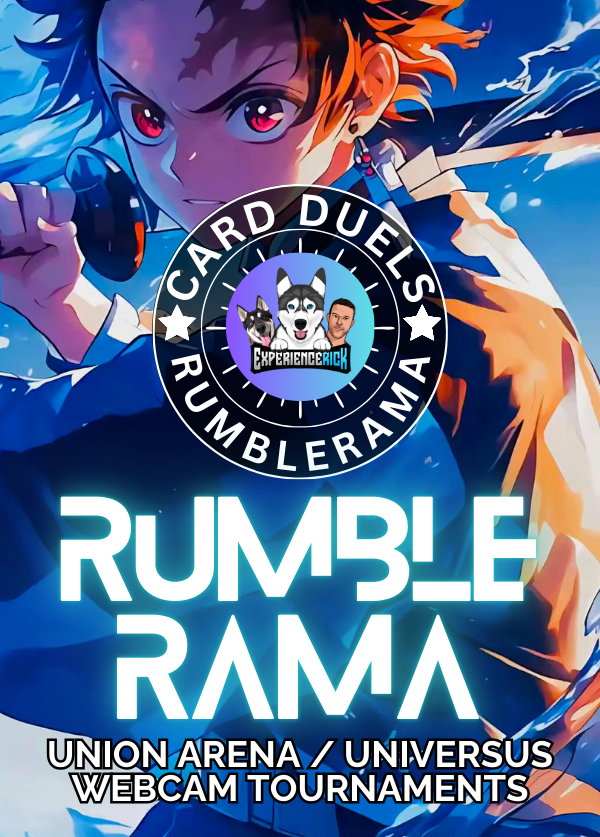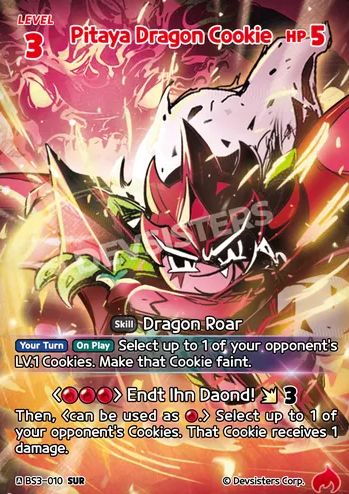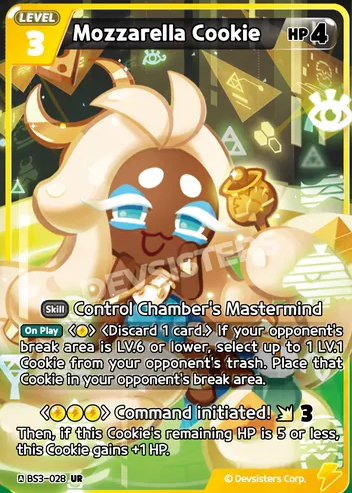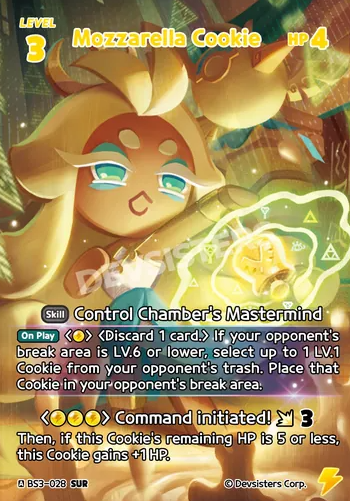Baited Hook is one of those Riftbound cards that instantly tells you what kind of player you are.
If you see a “kill your own unit” clause and think, “perfect,” then welcome—you’re among the real strategists.
This Gear piece isn’t just a combo enabler—it’s a deck-flipping power play disguised as bait.
Sitting in the yellow faction, Baited Hook feels designed for midrange or tempo brewers who aren’t afraid to turn sacrifice into advantage.
It’s not flashy on the surface, but don’t underestimate how hard this can swing a game when timed right.
Gameplay / Cool Mechanics
Here’s what Baited Hook does: for 3 mana, you attach this Gear, kill a friendly unit, and dig through the top 5 cards of your deck.
From there, you can play a unit with Might that has 1 more power than the dead unit—ignoring its cost. Then recycle the rest.
This card is all about value transfer and deck rigging. You’re not just making a trade—you’re sculpting your board and manipulating your deck.
Run it with small Might-synergy chaff you don’t mind killing. Drop something expendable, pull a 5-cost bruiser onto the field for free, and keep your curve broken in half.
What makes Baited Hook particularly dangerous is that it ignores cost entirely.
You’re skipping tempo rules if you can line up a proper sacrifice. It’s a conditional cheat effect—but Riftbound doesn’t hand those out casually.
The ceiling? Very high.
The floor? Still decent, especially in decks that want graveyard setup or sacrifice triggers.
Visuals
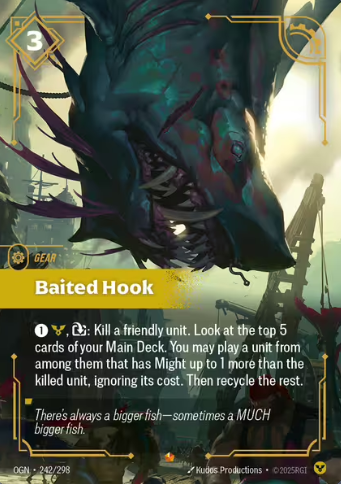
The art for Baited Hook leans heavily into that murky, deep-sea terror vibe. A monstrous, fanged beast lunges out of the water, hook still embedded in its lip. It’s not a metaphor—it’s a warning.
The framing is tight, chaotic, and off-angle—giving the sense you’re seconds from becoming the next meal.
There’s nothing polished here. Just raw instinct, motion, and danger.
Pull Rate & Value Speculation
Baited Hook is card 242/298, and as of now, no alt-art or overnumbered version has been confirmed.
But the highly stylized artwork and strong synergy potential suggest it may be slotted in at Rare or Uncommon with a high utility ceiling.
Collectors looking for long-term value may want to hold onto first-run foils of this one, especially if a sacrifice-heavy archetype rises in early meta testing.
Read more – Rhaza the Sunderer from Riftbound TCG

